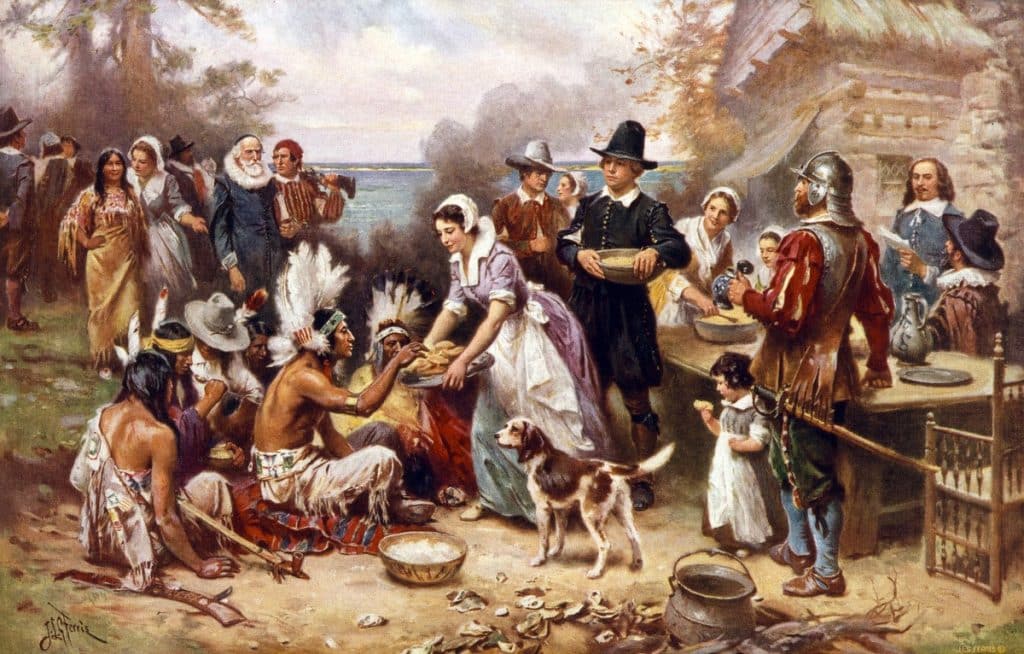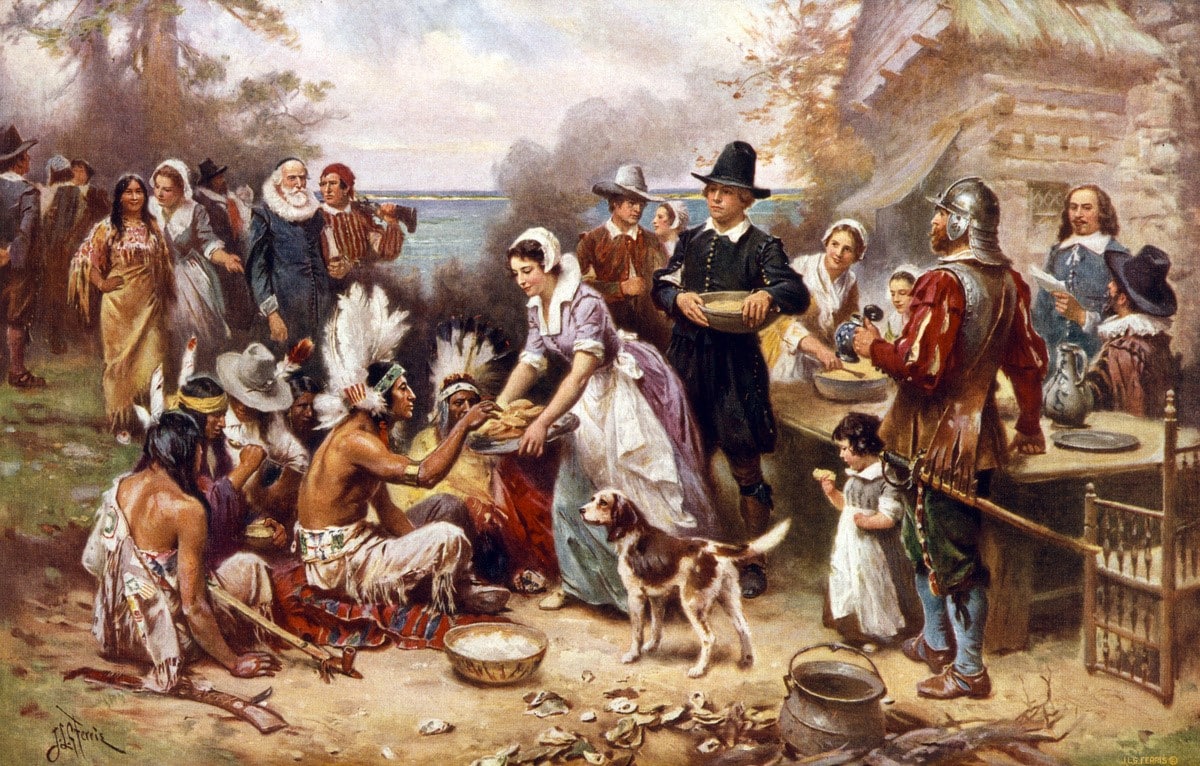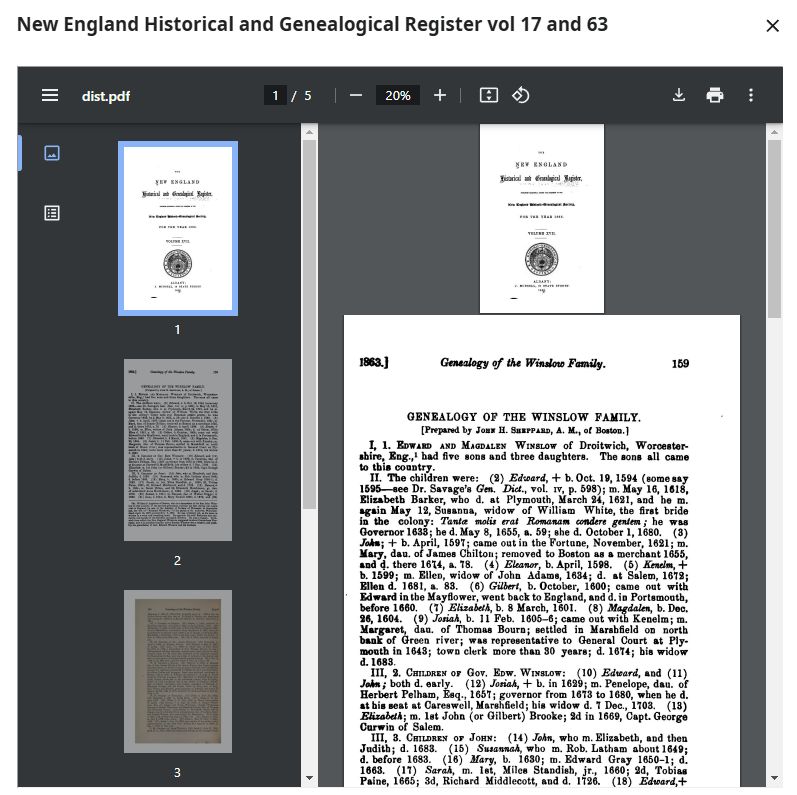How to Learn about Your Pilgrim Ancestors
 27
27Nov
Share their Stories this Thanksgiving

In the early autumn of 1621, the Pilgrims gathered to celebrate their successful harvest, as was the English custom. Among the surviving Pilgrims were 4 married women, 5 adolescent girls, 9 adolescent boys, 13 young children, and 22 men. Were one of these your ancestor? Approximately 10 million people in the United States are descendants of Mayflower passengers, or roughly 3% of Americans. This Thanksgiving, wouldn’t it be neat if you could talk about your Mayflower ancestor(s) as you sit around your dinner table and give thanks for your bounteous blessings?
To find out if you had ancestors on the Mayflower, log into FamilySearch.org. Once there, click on Activities on the menu bar and scroll down to Famous Relatives. You will see many categories of famous ancestors including Leaders, Inventors and Scientists, Entertainers and Artists, Church Leaders, Church Pioneers, Trailblazers, and Athletes.[1] Click on Trailblazers or scroll down until you find that section. Here you will find your Mayflower ancestors, as well as other important trail blazers.

Click on any ancestor’s picture to learn more about that person. If I click on Edward Winslow, a new window opens showing me a descendancy chart of how I am related to that trailblazer. I can then click on LEARN MORE under the ancestor’s picture.

Photos, Stories, Documents, and Audio (if applicable) can then be viewed for Gov. Edward Window II (1595-1655). It is important to remember that FamilySearch’s Family Tree is similar to Wikipedia – the information is contributed by many different people. So, the amount of material available for each person is dependent on what has been contributed.
PHOTOS

By clicking on Photos, you can see photos that have been uploaded to the Memories for that person. Clicking on any of the tiles will open that image to a larger, more readable size, such as this example for the first image in the top left:

STORIES

By clicking on Stories, you can read various typed accounts about your ancestor’s life. These  may include transcripts of diary or journal entries, published family histories, biographies, Wikipedia articles, or historical accounts.
may include transcripts of diary or journal entries, published family histories, biographies, Wikipedia articles, or historical accounts.
In the Stories for Edward Winslow we can read his account of the first Thanksgiving:
Early autumn of 1621
many of the Indians coming…amongst the rest their great king Massasoit, with some ninety men…Our harvest being gotten in, our governour sent foure men on fowling, that so we might after a special manner rejoyce together, after we had gathered the fruits of our labours; they foure in one day killed as much fowle, as with a little helpe beside, served the Company almost a weeke, at which time amongst other Recreations, we exercised our Armes, many of the Indians coming amongst us, and amongst the rest their greatest king Massasoyt, with some ninetie men, who for three days we entertained and feasted, and they went out and killed five Deere, which they brought to the Plantation and bestowed on our Governour, and upon the Captaine and others. And although it be not always so plentifull, as it was at this time with us, yet by the goodness of God, we are so farre from want, that we often wish you partakers of our plentie.”
DOCUMENTS

Under documents you will find various documents (original and secondary) that have been uploaded to Memories, such as a church baptism or marriage record, or the ancestor’s original diary or journal. There might be images of biography pages or county histories. Here is an excerpt from the New England Historical and Genealogical Register (v.17, pg63) about the Genealogy of the Winslow Family.

Lastly, you can always click on the Personal Identification Number for your ancestor, listed just below their name at the top of the page. This will take you to their full Family Tree details page. From here, you can click on Memories and see many more records. You can also click on Time Line to see a simple chronology of your ancestor’s life.
Make this Thanksgiving unique. Perhaps print out a descendancy chart (like the one shown above) for each person at your dinner table showing how they are related to a Mayflower ancestor. And if you don’t have any Mayflower ancestors, discuss other pilgrim ancestors you had who embarked on a journey driven by faith, purpose, or the pursuit of a higher calling. Learning about our immigrant ancestors, who symbolize resilience, hope, and a commitment to principles that transcend personal comfort, helps us feel more gratitude for our blessings and creates more love within our families, as we more fully appreciate those who paved the way before us.
If you need help learning about your ancestors, Price Genealogy can help!
Happy Thanksgiving!
Emily
[1] Results in Famous Relatives are based on the information currently in your family tree.
All images are in the public domain
